Nvidia's GeForce GTX 1080 Ti shook the world of gaming like few other products have when it arrived over eight years ago in March 2017. I personally reviewed it at launch, and I was astounded by how smoothly and fluidly it handled the most challenging games of its time, even at 4K (and without the benefit of DLSS or FSR).
The 1080 Ti’s arrival also marked the beginning of nearly four years of unchallenged GeForce dominance at the very top of the PC gaming hill. Sure, the RX Vega 64 chased the second-best GTX 1080 and the Radeon VII fought it out with the second-best RTX 2080 within their generations, but the 1080 Ti (and its successor 2080 Ti) stood unchallenged during their reigns.
It then took until December 2020 for the RX 6900 XT to return Radeons to the flagship battlefield by beating the RTX 3080 and trading blows with the flagship RTX 3090. (AMD has since exited the flagship graphics card arms race again, but that’s a considered business decision and not a matter of technical defeat.)
Between its long run of dominant performance, the unusual longevity provided by its 11GB of VRAM, and its $699 price tag—the friendliest ever for a flagship graphics card, and the last time we would ever see a card of its class sell for so little—the GTX 1080 Ti may be the single most famous, most-loved, and longest-lasting graphics card ever made.
Swipe to scroll horizontally
Graphics Card | RX 9060 XT 16GB | RTX 5060 Ti 16GB | RTX 5060 | RTX 5050 | Arc B580 | Arc B570 | GTX 1080 Ti |
Architecture | Navi 44 | GB206 | GB206 | GB207 | BMG-G21 | BMG-G21 | GP102 |
Process Technology | TSMC N4P | TSMC 4N | TSMC 4N | TSMC 4N | TSMC N5 | TSMC N5 | TSMC 16FFN |
Transistors (Billion) | 29.7 | 21.9 | 21.9 | 16.9 | 19.6 | 19.6 | 12 |
Die size (mm^2) | 199 | 181 | 181 | 149 | 272 | 272 | 471 |
SMs / CUs / Xe-Cores | 32 | 36 | 30 | 20 | 20 | 18 | 28 |
GPU Shaders (ALUs) | 2048 | 4608 | 3840 | 2560 | 2560 | 2304 | 3584 |
Tensor / AI Cores | 64 | 144 | 120 | 80 | 160 | 144 | N/A |
Ray Tracing Cores | 32 | 36 | 30 | 20 | 20 | 18 | N/A |
Boost Clock (MHz) | 3130 | 2572 | 2497 | 2570 | 2850 | 2750 | 1600 |
VRAM Speed (Gbps) | 20 | 28 | 28 | 20 | 19 | 19 | 11 |
VRAM (GB) | 16 | 16 | 8 | 8 | 12 | 10 | 11 |
VRAM Bus Width | 128 | 128 | 128 | 128 | 192 | 160 | 352 |
L2 / Infinity Cache | 32 | 32 | 24 | 24 | 18 | 13.5 | 2.75 |
Render Output Units | 64 | 48 | 48 | 32 | 80 | 80 | 88 |
Texture Mapping Units | 128 | 144 | 120 | 80 | 160 | 144 | 224 |
TFLOPS FP32 (Boost) | 25.6 | 23.7 | 19.2 | 13.2 | 14.6 | 12.7 | 11.5 |
TFLOPS FP16 (FP4/FP8 TFLOPS) | 205 (821) | 190 (759) | 153 (614) | 105 (421) | 117 (233) | 101 (203) | N/A |
Bandwidth (GB/s) | 320 | 448 | 448 | 320 | 456 | 380 | 484 |
TBP (watts) | 160 | 180 | 145 | 130 | 190 | 150 | 220 |
Launch Date | 45813 | 45763 | 45793 | 45839 | 45639 | 45673 | 42794 |
Launch Price | 349 | 429 | 299 | 249 | 249 | 219 | 699 |
As a quick refresher, the GTX 1080 Ti was good for about 11 TFLOPS of raw compute at its rated clock speeds, which was unmatched by any consumer graphics card at the time but now falls behind even an RTX 5050. Its 11GB of GDDR5X memory ran at 11Gbps across a 352-bit bus, delivering 484 GB/s of bandwidth (or a bit ahead of an RTX 5060 today). Let's see how that all holds up in actual gaming performance with our current stable of games.
Raster gaming performance
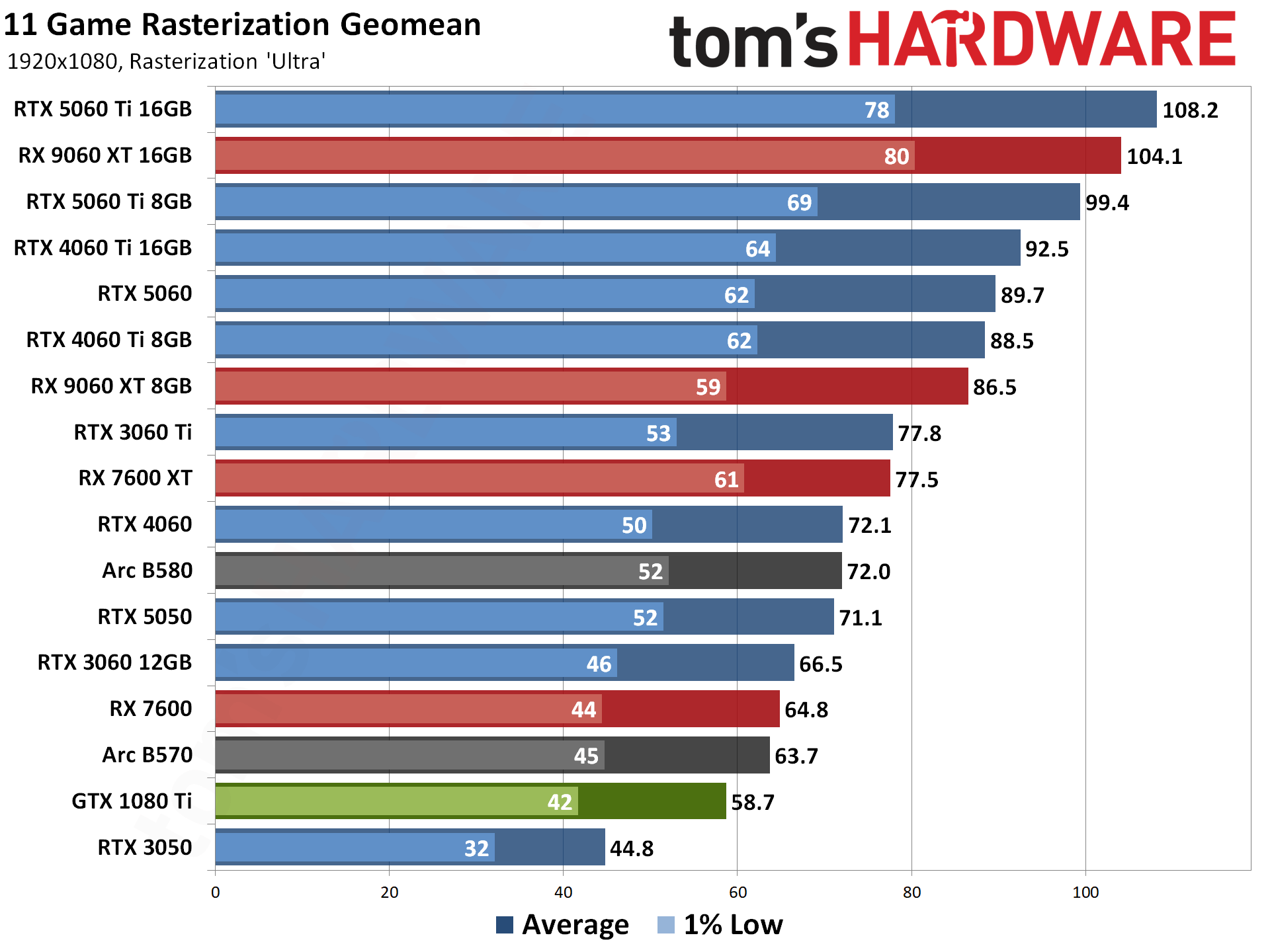
In our overall performance geomean of 11 raster titles (minus Black Myth Wukong, which recently received a major update that invalidates our current data set), the GTX 1080 Ti is still—still!—good for nearly a 60 FPS average at 1080p, and its 1% lows are barely worse than more modern cards like the Arc B570, Radeon RX 7600, and RTX 3060 12GB.
For an eight-year-old graphics card, that's pretty amazing stuff. Most of the time, when we're discussing a PC component that old, we'd just tell you to upgrade, yet the 1080 Ti is still relevant (albeit hanging by its fingertips).
At 1440p, the 1080 Ti still has enough gas in it that you might try enabling XeSS or FSR upscaling where it's available to get above 50 FPS on a variable-refresh-rate monitor, although our informal testing of that experience with XeSS and high presets suggests that you'll still be on the ragged edge of playability. Again, though, this is an eight-year-old graphics card staying in the fight across a range of modern games.
At 4K, none of these cards really have what it takes to deliver a playable experience, and the 1080 Ti is no different, despite shifting toward the top of the charts.
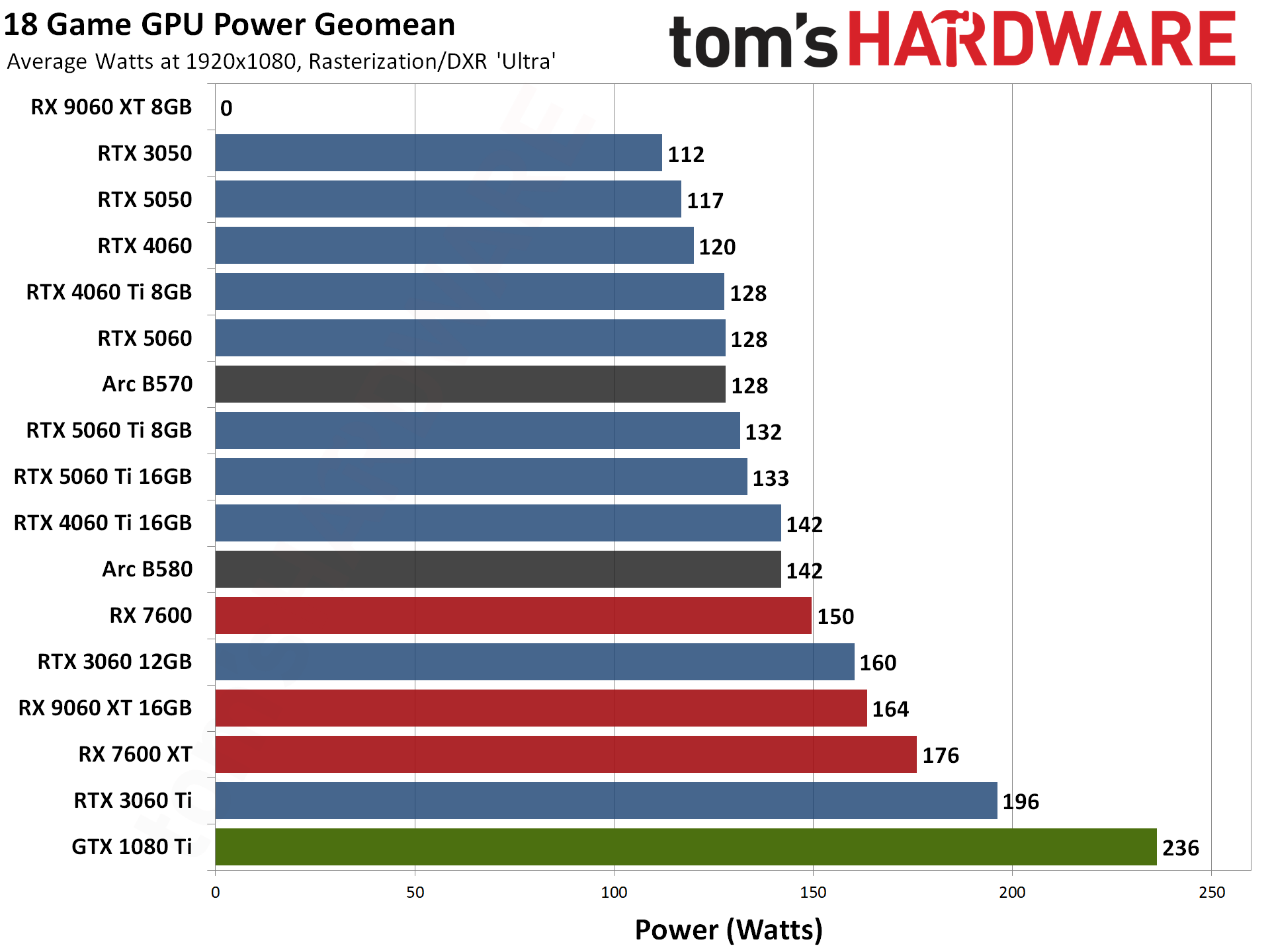
Perhaps the worst thing that can be said about the GTX 1080 Ti at this stage is that even as its gaming performance has gracefully degraded, it's still a 250W GPU, meaning that it's sucking down a lot of power and producing a lot of heat to deliver 1080p gaming performance that's well short of even the RTX 5050.
We're fudging a bit here since the 1080 Ti is the only card of this bunch that can't do RT, and the rest of these cards still have RT power taken into account. Even so, it draws way more power than anything else on the bench, so its power efficiency is well behind GPUs built on modern architectures and process technologies.
Hats off to a legend
Years after a product's launch, nostalgia and Internet mythologizing can inflate its reputation well beyond what's deserved as more and more gamers upgrade their gear and fewer and fewer speak from direct experience. The 1080 Ti has developed a reputation as an unstoppable titan of gaming even in its advanced age, and by the numbers, that's still kind of the case at 1080p.
Running the 1080 Ti through our current test suite shows it can still deliver just shy of 60 FPS at 1080p, and for an eight-year-old graphics card, that's amazing stuff. Even if its performance no longer wows, the 1080 Ti didn't exhibit any show-stopping rendering bugs or performance issues that made gaming on it unenjoyable. This card's 11GB of VRAM ensures performance doesn't fall off a cliff even with VRAM-hungry console ports, too.
Of course, the 1080 Ti misses out on a lot of modern features that we now take for granted in gaming. It can't use Nvidia's revolutionary DLSS upscaling in any form, meaning that you're at the mercy of Nvidia Image Scaling or the highly variable quality of FSR and XeSS implementations in any game where you want a boost.
And even if you do find an upscaling config that you can live with, the 1080 Ti's baseline performance still might not be high enough to guarantee 60 FPS or better on average.
The 1080 Ti also lacks RT acceleration of any kind. That's still not a big deal in the vast majority of titles, since RT effects rarely make or break the gaming experience. But both Doom: The Dark Ages and Indiana Jones and the Great Circle can’t run on this card, and only time will tell whether that kind of hard RT requirement grows more common. If it does, it could prove terminal for a 1080 Ti if it affects a game you badly want to play.
The 1080 Ti shows its age in other ways beyond its degraded performance and feature support. This card exhibited weird ClearType issues with my ROG XG27UCS testing monitor, even after adjustments, and it can't run that display at 4K and its native 160Hz refresh rate because its DisplayPort connectors don't support Display Stream Compression. Those quality-of-life issues would have me shopping for a new graphics card if a 1080 Ti were still in my primary rig.
If you're still running a GTX 1080 Ti and you're starting to get the upgrade itch, any of our best graphics card picks for enthusiasts are a major advance. Spend the same $700-ish that the GTX 1080 Ti went for on a new graphics card in 2025, and you're playing with an RX 9070 XT or RTX 5070 Ti, both of which are screaming fast by comparison (and actually cheaper, adjusted for inflation, than the Pascal flagship was at launch).
Even the more attainable RX 9060 XT 16GB and RTX 5060 Ti 16GB will provide big boosts in gaming performance, as well as access to modern upscaling and RT acceleration.
For all that, I can’t blame you if you're still holding onto your GTX 1080 Ti if you aren’t chasing the cutting edge of gaming performance. It still just works. If you bought a 1080 Ti at launch, you've enjoyed eight years of trouble-free gaming and counting, and your card has been and will continue to be useful in many popular games even as official support ends. It's hard to ask for more than that amid the ceaseless march of technological advancement.

 1 month ago
62
1 month ago
62
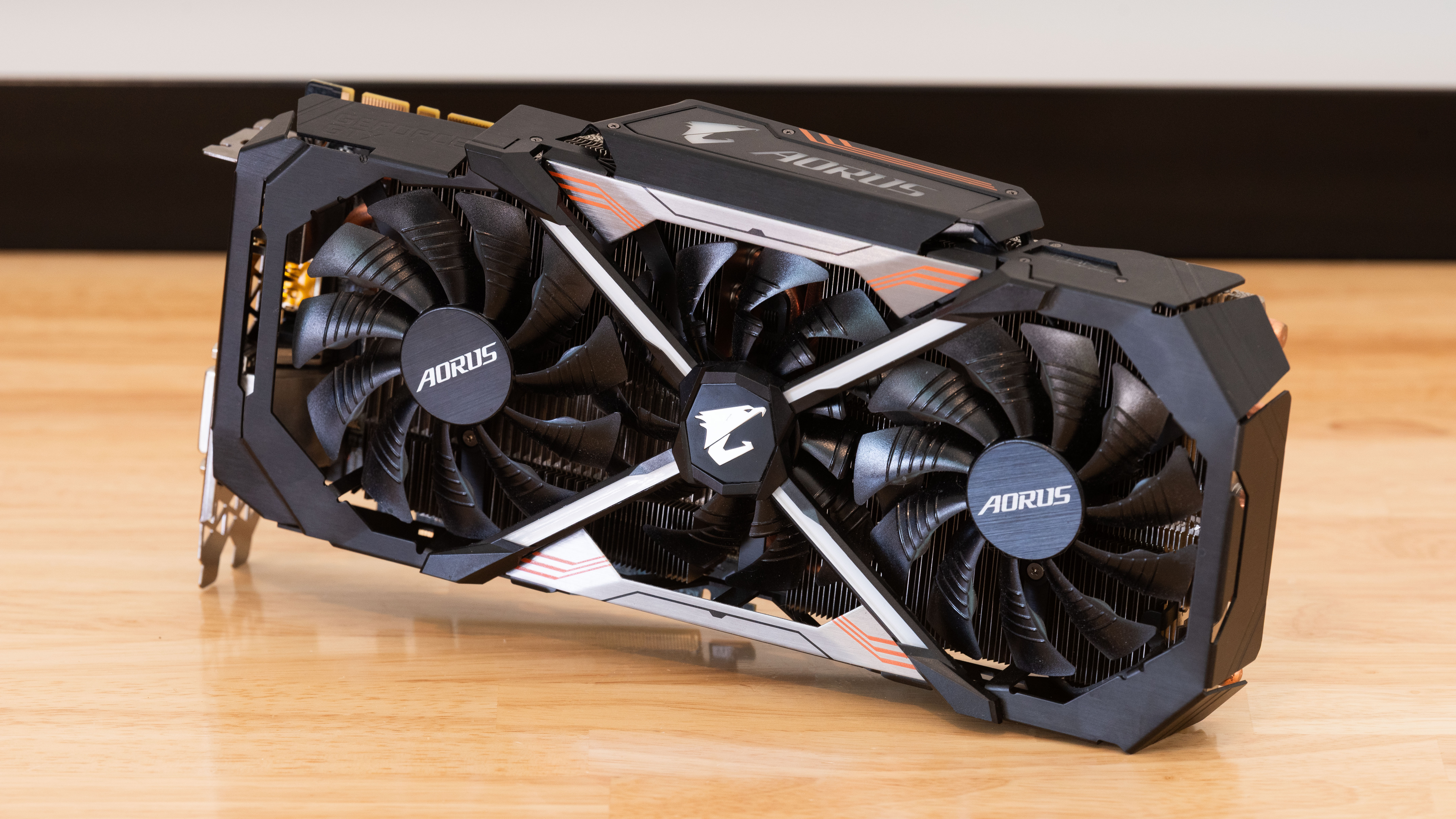
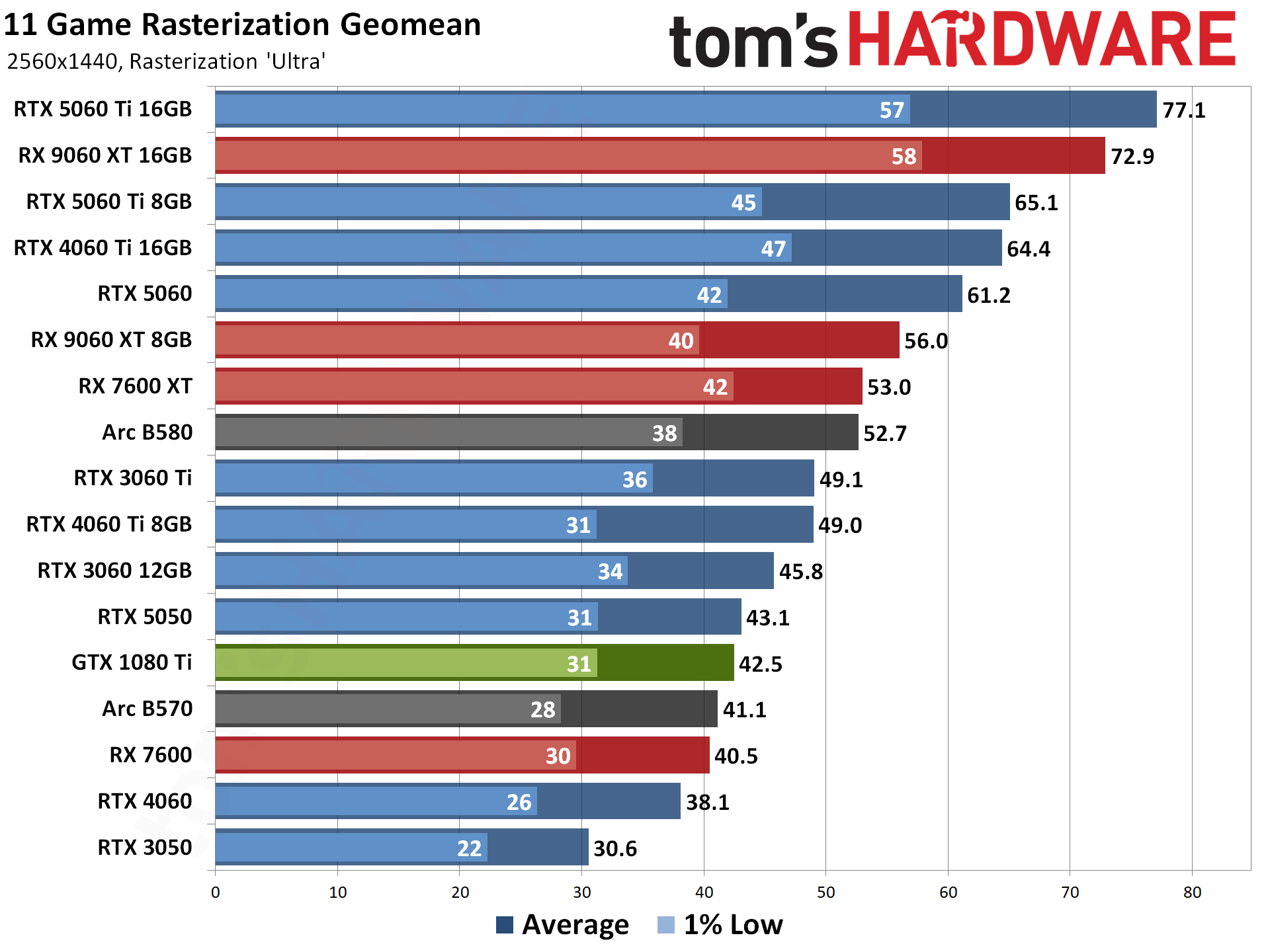
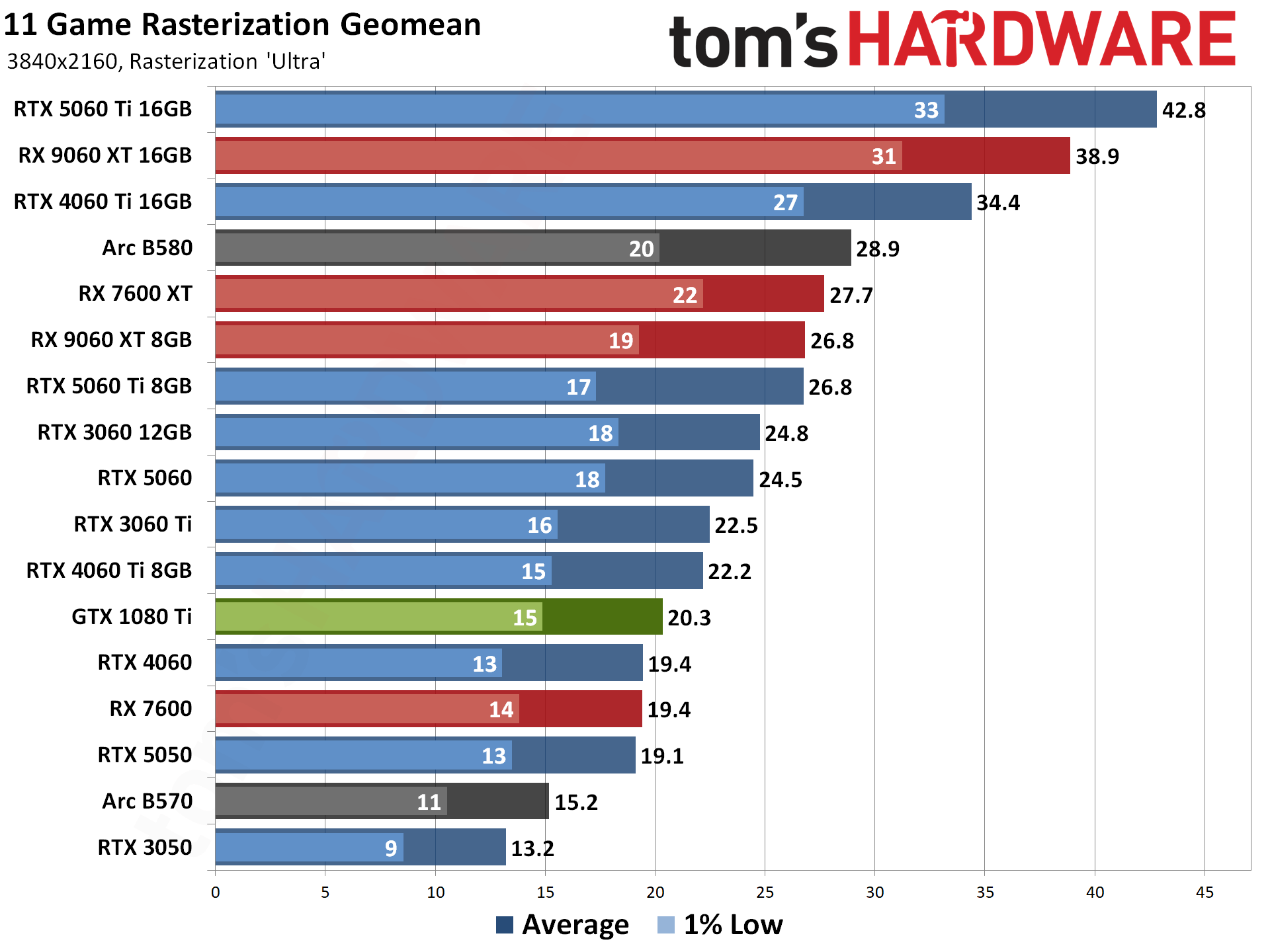


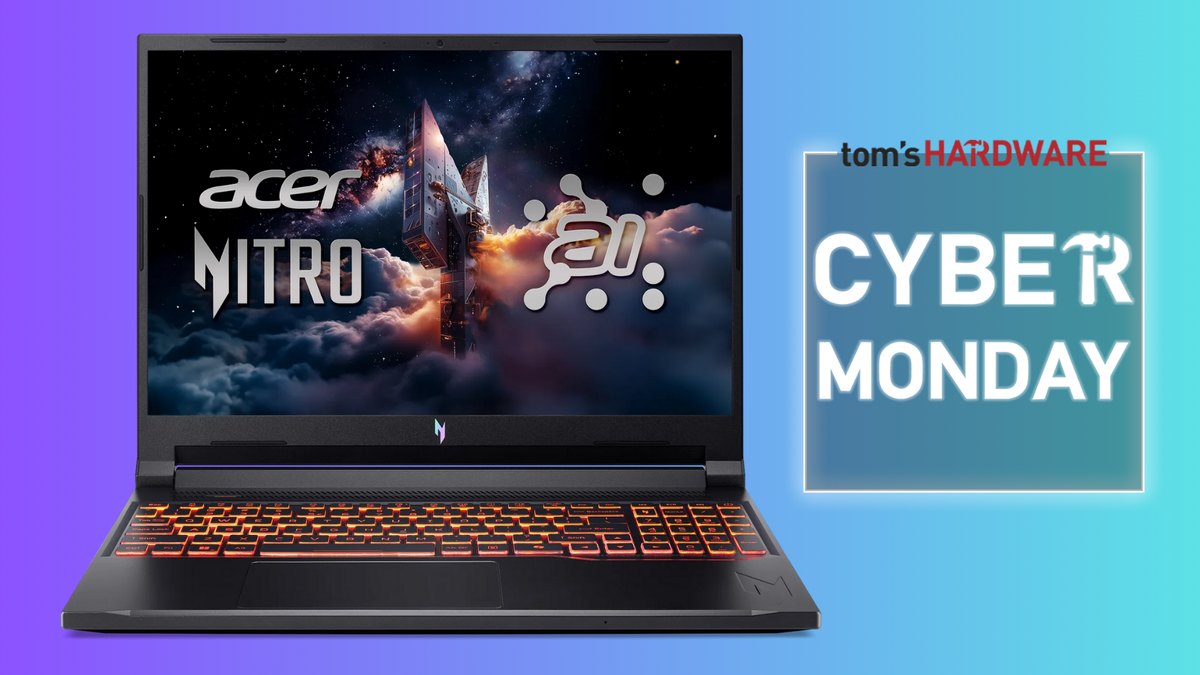
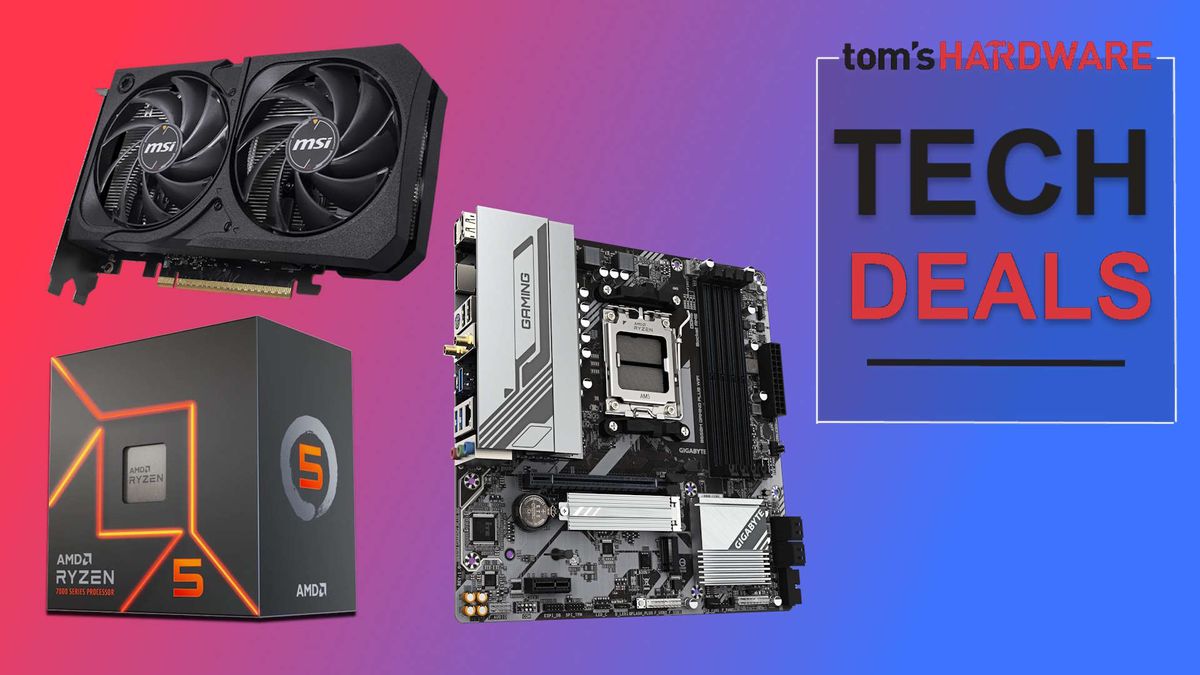


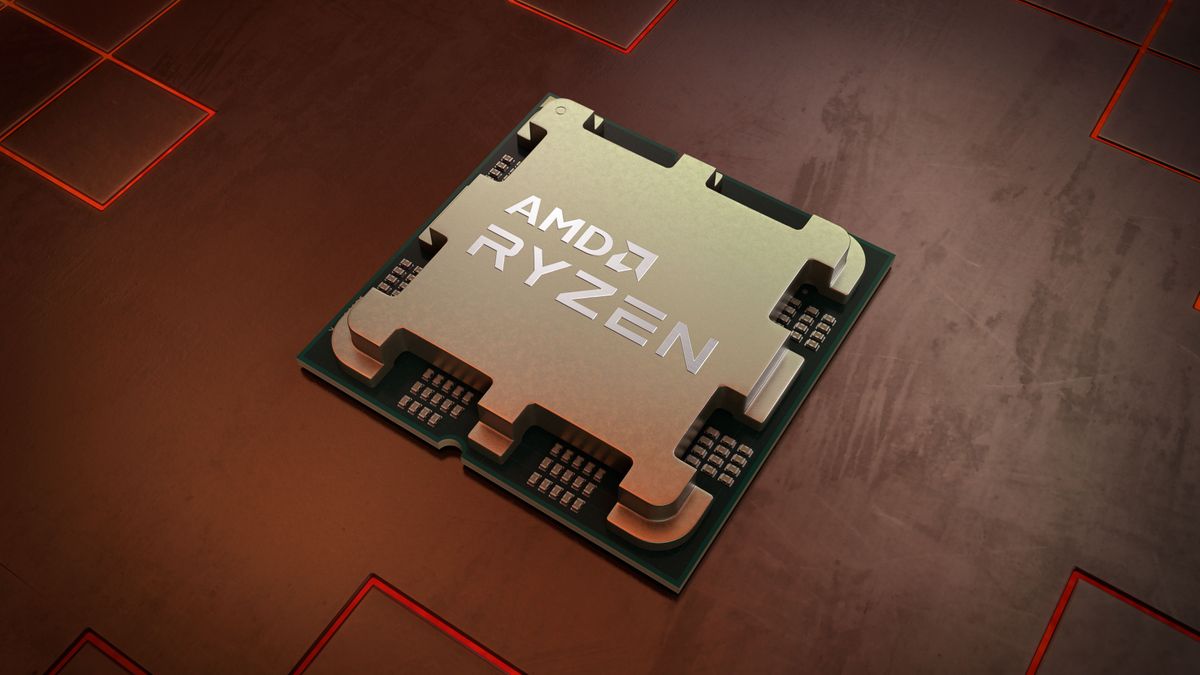
 English (US) ·
English (US) ·